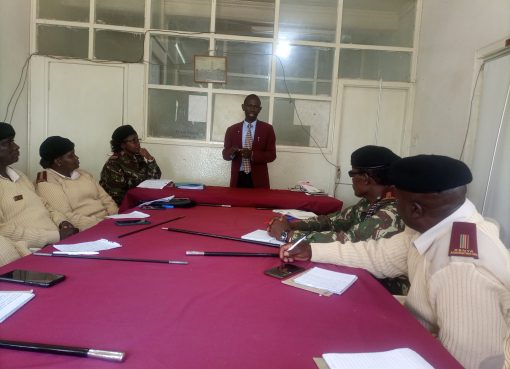The World Health Organization (WHO) has released guidelines for management of TB in children and adolescents.
The guidelines released ahead of the World TB Day to be marked on Thursday 24th highlights new patient-centred recommendations for diagnosis, treatment and prevention.
Dr Tereza Kasaeva, Director of WHO’s Global TB Programme says that children and adolescents with TB, are lagging behind adults in access to TB prevention and care.
“The WHO guidelines being issued today are a gamechanger for children and adolescents, helping them get diagnosed and access care sooner, leading to better outcomes and cutting transmission,” she said in a statement.
The priority now, Dr Kasaeva added, is to rapidly expand implementation of the guidance across countries to save young lives and avert suffering.
According to WHO, in 2020, an estimated 63 percent of children and young adolescents below 15 years with TB were not reached with or not officially reported to have accessed life-saving TB diagnosis and treatment services.
The proportion was even higher at 72 percent for children under 5 years with almost two thirds of eligible children under 5 not receiving TB preventive treatment and therefore remaining at risk of illness. The most recent recommendations are, Diagnostic testing is expanded to include non-invasive specimens, such as stools and Rapid molecular diagnostics to be recommended as the initial test for TB diagnosis for children and adolescents.
For Children and adolescents who have non-severe forms of drug-susceptible TB, it is now recommended that it should be treated for four months instead of six months, as well as TB meningitis, where a six-month regimen is now recommended instead of 12 months.
This according to WHO promotes a patient-centred approach that will reduce the costs of TB care for children, adolescents and their families.
Two of the newest TB medicines to treat drug resistant TB (bedaquiline and delamanid) are now recommended for use in children of all ages, making it possible for children with drug-resistant TB to receive all-oral treatment regimens regardless of their age.
New models of decentralized and integrated TB care are also recommended, which will allow more children and adolescents to access TB care or preventive treatment, closer to where they live.
In Kenya, 6 days ago, the Ministry of Health launched revised key policy documents that will guide the management of Tuberculosis and Asthma in the country.
Acting Director General for health Dr Patrick Amoth, noted during the launch that the documents among them the Integrated TB, Leprosy and Lung Disease Guideline will provide up to date information to the frontline workers.
The DG acknowledged that TB continues to be a major public health concern with Kenya being ranked among the high burden in TB and TB/HIV. In 2020, the country recorded 72,943 TB cases among them 5,663 children.
“The 2016 prevalence survey showed that the country nearly missed 40 percent of the estimated cases and this should be a reason for everyone to be engaged in the fight against TB”, Dr Amoth said.
Meanwhile, WHO has called for urgent investment of resources, support, care and information into the fight against Tuberculosis (TB).
The world body says that although 66 million lives have been saved since 2000, the COVID-19 pandemic has reversed those gains.
According to WHO, Global spending on TB diagnostics, treatments and prevention in 2020 were less than half of the global target of Sh1.3 trillion annually by 2022, with an extra Sh110 billion per year needed for research and development.
Dr Tedros Adhanom Ghebreyesus, WHO Director-General, says that urgent investments are needed to develop and expand access to the most innovative services and tools to prevent, detect and treat TB that could save millions of lives each year, narrow inequities and avert huge economic losses.
World Tuberculosis (TB) Day will be celebrated tomorrow to raise public awareness about the devastating health, social and economic consequences of TB.
The theme of World TB Day 2022 is ‘Invest to End TB. Save Lives.’
TB remains one of the world’s deadliest infectious killers. Each day, over 4 100 people lose their lives to the menace, while close to 30 000 people fall ill with this preventable and curable disease.
By Wangari Ndirangu





